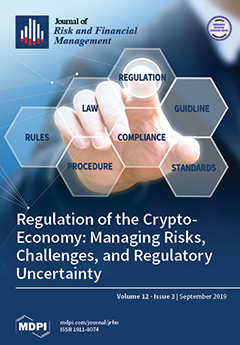The members of the Association of Southeast Asian Nations (ASEAN) have made several attempts to adopt renewable energy targets given the economic, energy-related, environmental challenges faced by the governments, policy makers, and stakeholders. However, previous studies have focused limited attention on the role
[...] Read more.
The members of the Association of Southeast Asian Nations (ASEAN) have made several attempts to adopt renewable energy targets given the economic, energy-related, environmental challenges faced by the governments, policy makers, and stakeholders. However, previous studies have focused limited attention on the role of renewable energy when testing the dynamic link between CO
2 emissions, energy consumption and renewable energy consumption. As such, this study is conducted to test a common hypothesis regarding a long-run environmental Kuznets curve (EKC). The paper also investigates the causal link between carbon dioxide (CO
2) emissions, energy consumption, renewable energy, population growth, and economic growth for countries in the region. Using various time-series econometrics approaches, our analysis covers five ASEAN members (including Indonesia, Myanmar, Malaysia, the Philippines, and Thailand) for the 1971–2014 period where required data are available. Our results reveal no long-run relationship among the variables of interest in the Philippines and Thailand, but a relationship does exist in Indonesia, Myanmar, and Malaysia. The EKC hypothesis is observed in Myanmar but not in Indonesia and Malaysia. Also, Granger causality among these important variables varies considerably across the selected countries. No Granger causality among carbon emissions, energy consumption, and renewable energy consumption is reported in Malaysia, the Philippines, and Thailand. Indonesia experiences a unidirectional causal effect from economic growth to renewable energy consumption in both short and long run and from economic growth to CO
2 emissions and energy consumption. Interestingly, only Myanmar has a unidirectional effect from GDP growth, energy consumption, and population to the adoption of renewable energy. Policy implications have emerged based on the findings achieved from this study for each country in the ASEAN region.
Full article




